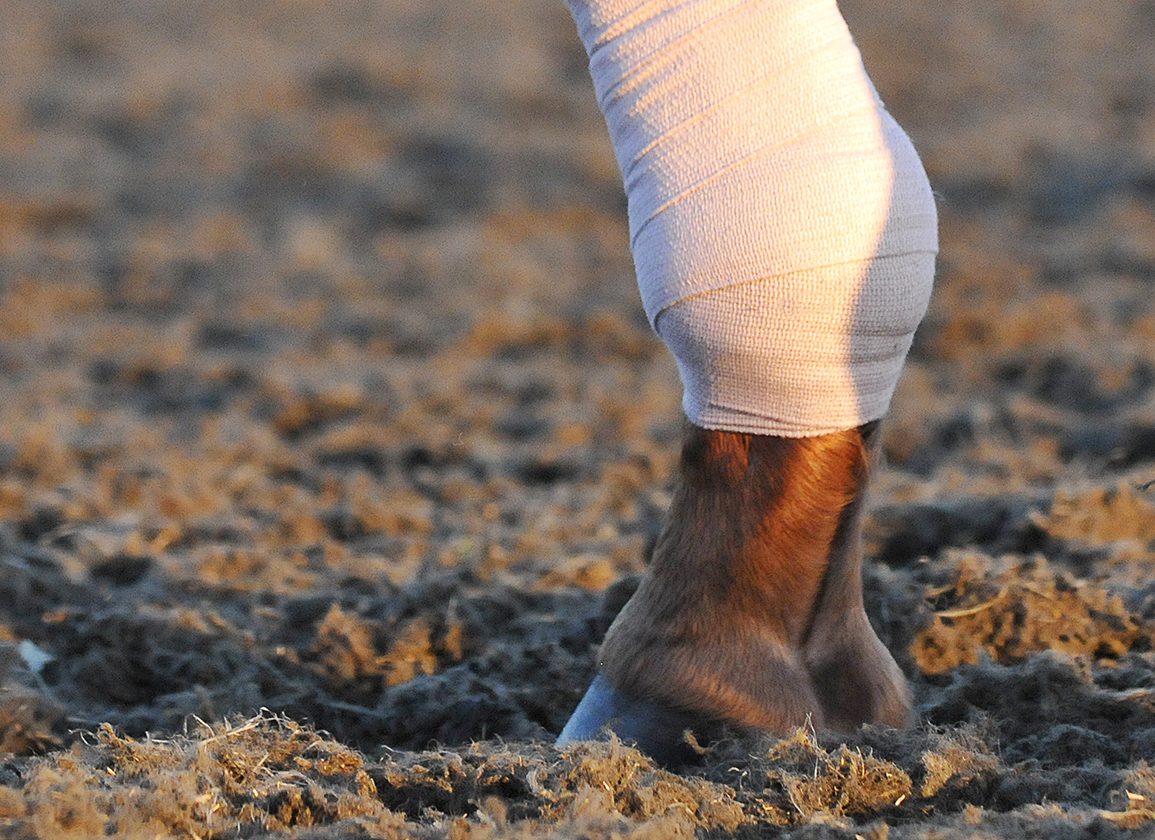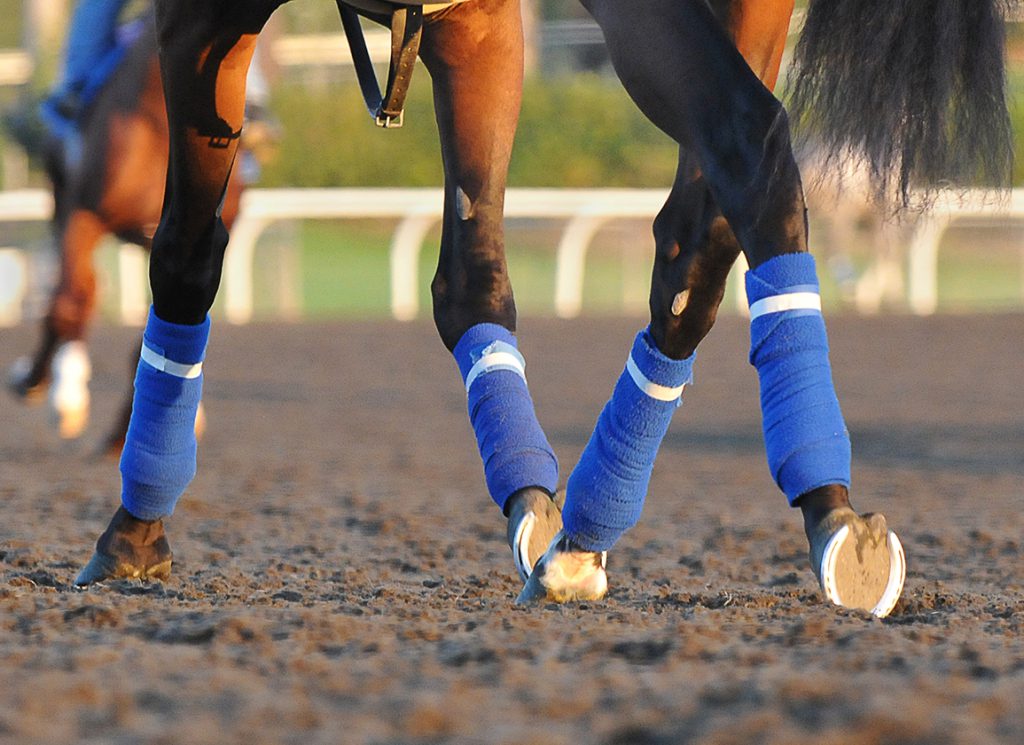Editor's note: Bill Casner, a long-time participant in many facets of racing, is probably best known for founding WinStar Farm with Kenny Troutt and winning the 2010 GI Kentucky Derby with Super Saver. Among Casner's many roles in the sport have been founding director of the Race for Education and Kentucky Equine Education Program (KEEP). He has sold his interest in WinStar to Troutt and currently operates as Casner Racing.
Horse racing is in a firestorm. We are at survival tipping point. The decisions that are made in the short term will determine whether horseracing can endure as we know it. The American public has no tolerance for what they perceive as a sport that is immersed in carnage. I commend Churchill Downs for suspending racing to take a hard look at their future and to explore solutions that will be significant in mitigating breakdowns and restoring confidence to our fans.
The one decision that would be a major game changer is to convert the racing surface at Churchill Downs to synthetic. In the released 2022 The Jockey Club (TJC) Equine Injury Database (EID) for the year 2021, injuries on dirt were 1.44 per 1,000 horse starts. Turf injuries were 0.99 per 1,000. Injuries on synthetic were vastly diminished with 0.41 per 1,000. This data shows that synthetic surfaces are 3.5 times safer than dirt and 2.2 times safer than turf. These stats are compelling in showing the exponential safety of today's synthetic surfaces over dirt and turf.
The data is compelling but it doesn't tell “WHY” synthetic tracks are safer. Back in 2006, I chaired the shoeing committee for TJC Welfare and Safety Summit. We were tasked to examine the safety of toe grabs which Dr. Sue Stover at UC Davis had shown to significantly contribute to breakdowns. We employed sophisticated high-speed cameras with a closed group of nine horses provided by Chris McCarron's jockey school to understand why toe grabs were contributing to breakdowns. We filmed the hoof's contact with the racing surface using a variety of shoes with varying toe grab lengths on both dirt surfaces and Keeneland's synthetic track.
The results were dramatic. What we learned was the effect of “slide” on the lower limb of the horse. With Queen's Plates, the front foot has an average slide on dirt of 3 1/2 to 5 inches. The average slide on synthetic was 1 1/2 inches. Slide is important to understand. It's the “give” in a horse's stride. The increased length of slide on dirt causes two things to happen. First, it magnifies torque on a horse's lower limb. If a horse “toes in” the limb incurs torque medially because of the increased forces on the outside of the hoof. If they toe out, then the torque is lateral with the increased forces on the inside of the foot. And when horses step in holes on a dirt track, the torque can go either way. This doesn't happen on synthetic tracks because of the shorter slide which greatly diminishes torque. Also, a horse's foot is always landing flat on a synthetic surface as opposed to the cuppy holes that cover a dirt track. Synthetic also provides a much higher energy absorption than dirt with a higher energy return.
The second important factor that we were able to measure was the magnified load on the pastern that was presented on dirt. Because of the exaggerated slide and delayed break over on dirt, the pastern continues to load through the stride, increasing its drop by as much as an inch over synthetic. We were also able to see this increased load when horses landed in the “holes” created on dirt tracks.
As you can visualize, the increased load or drop of the pastern creates excessive strains on the suspensory apparatus of the horse's lower limbs magnifying the opportunity for a catastrophic failure. When a horse blows out its suspensory apparatus in a race it leads to a broken leg in the next few strides.
Suspensory and tendon injuries are extremely rare on synthetic but occur way more frequently on dirt because of these magnified strains.
The videos also exposed how lethal toe grabs were on all surfaces. They were especially detrimental on synthetic because they abruptly stopped the foot not allowing any slide. This is why trainers were experiencing rear-end injuries early on because they were continuing to use toe grabs on the rear feet.
Catastrophic break downs are rarely caused by one bad step although this is more likely on dirt. As most orthopedic surgeons will testify, they are the result of cumulative microscopic injuries that accrue with the thousands of steps a horse accumulates in training and racing. It's the laws of physics. Excessive torque and loads on a horse's legs will eventually take its toll. With a synthetic surface these strains are greatly diminished and a horse's natural ability to remodel its bone will repair and strengthen it at a cellular level.
We not only have the irrefutable data over hundreds of thousands of horse starts on synthetic but we have the notable success of several major tracks that have employed them.
The first is Keeneland. The last meet they ran on synthetic in 2014 was the most successful meet in Keeneland's history at that point. All-time attendance and handle records were set. There were record field sizes, minimal scratches with inclement weather when races were taken off turf. And most importantly, there were zero breakdowns!
The second is Santa Anita. The last meet run at Santa Anita in 2009 had an injury rate of 0.57 per 1,000 horse starts compared to their pre-synthetic era on dirt of 2.78 per 1,000. That computes to a 4.8 times higher safety record. This is in spite of a poor-quality installation that would not properly drain, eventually having a subsurface membrane failure allowing aggregate to float to the surface.
Here are some compelling stats from three tracks currently running on synthetic surfaces: Golden Gate, Presque Isle, and Gulfstream.
Golden Gate had an injury rate of .38 per 1,000 with 12,986 horse starts in 2021 and 2022 on their Tapeta surfaces.
Presque Isle race meets in 2021/2022 had 0.24 injuries per 1,000 with 8,178 horse starts.
Gulfstream with its newly installed Tapeta track had the best record of all with only one injury out of 7,085 horse starts with 0.14/1,000. This translates to a 9.7 times safer surface than their dirt track.
Belmont has recognized the advantages of having a synthetic surface with its scheduled completion in the spring of 2024.
Injuries on a national basis have dropped significantly at certain tracks since the implementation of intensified pre-race veterinary examinations of our horses and have the promise of continuing to diminish injuries with mandated requirements by HISA. This high-level scrutiny of starters combined with the safest possible racing surface will dramatically reduce injuries and show the world that we care.
Horseracing is a sport with a rich history of tradition. The thought of changing the racing surface of the Kentucky Derby to a synthetic surface will not appeal to those that value tradition above the safety of our horses and the survival of our beautiful sport. If we do not take drastic proven steps to significantly eliminate breakdowns we are destined for the fate of Greyhound racing.
Today's public has no stomach or tolerance for what they perceive as abuse of our horses. The “writing is on the wall” or in our case the New York Times, CNN and the 6 o'clock news. We either embrace innovative change supported by the data to maximize safety for our horses and riders or we are destined to experience a slow painful death.
Not a subscriber? Click here to sign up for the daily PDF or alerts.







